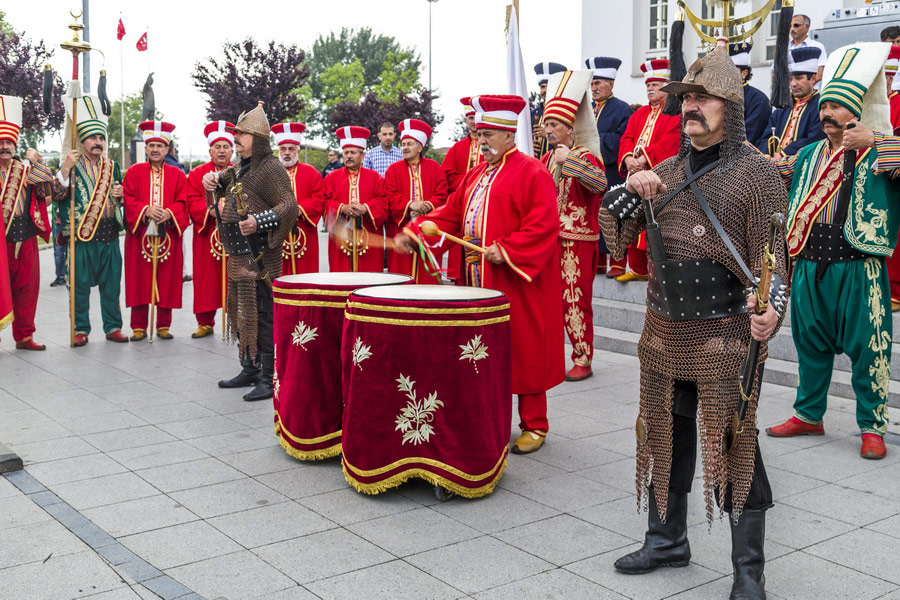Turkish traditions and customs are principal aspects of the Turkish culture. They span many civilisations, from nomadic tribes that came to the country from Central Asia, the Seljuk Turks, the Byzantines, and the Romans to the Ottoman Empire and the Republic of Turkey (Türkiye), which separated religion and state. Due to its rich history and European and Asian borders, many cultures, including Western, influenced some of Turkey's traditions.
Turkish customs feature religion and folk, while others derive from myths or legends. For example, wearing an evil eye, an established custom in Turkey, was widespread in ancient Greece and Rome as well as in Jewish, Islamic, Buddhist, and Hindu cultures.
Below are several traditions that continue to be practiced in Turkey today. It is considered thoughtful to be acquainted with the customs of Anatolian Turks; this deepens your understanding of the local culture and helps navigate social interactions. Besides, Turkish people value the efforts of foreigners who show an appreciation for their cultural heritage.
Religious Customs
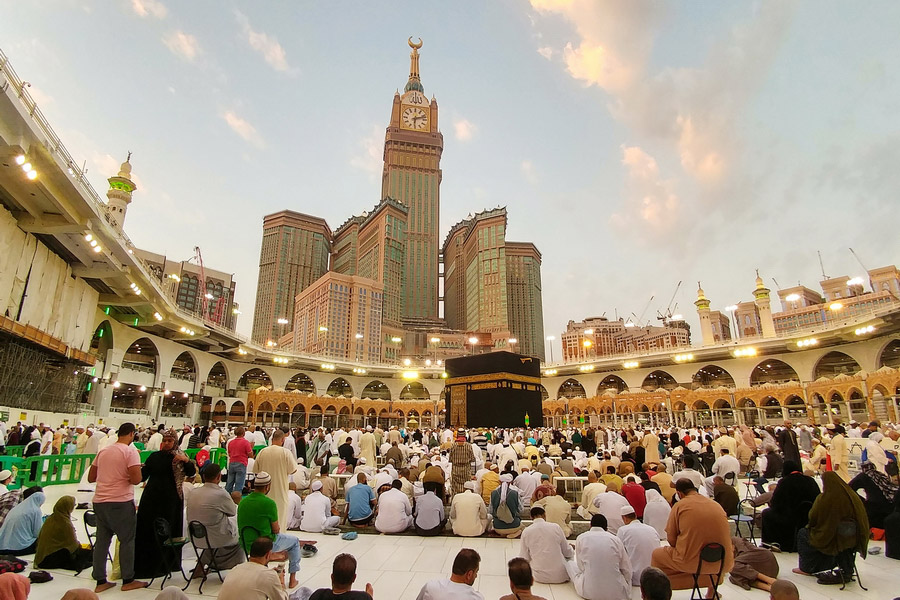
Turkey’s religious customs are influenced primarily by Islam, followed by most of the population. The country is officially secular, but religious traditions are a significant part of the cultural fabric, from the calls to prayer that resonate in cities to the observance of Ramadan to Islamic holidays.
Honouring Pilgrims
In Islam, performing the Hajj—the pilgrimage to Mecca—is a sacred duty for every devout and physically and financially capable Muslim. According to the Directorate of Religious Affairs (Diyanet), over 92,000 Turkish citizens undertook this holy journey in 2023. In addition, Turkey has a religious tradition of supporting and honouring pilgrims, both before and after their journey. They are generally sent off and welcomed back with great respect, receiving gifts and being celebrated with dinners organised for them.
Sünnet Düğünü Celebration
The Sünnet Düğünü, a grand celebration akin to a wedding, recognises a young boy following his circumcision ceremony. This festive occasion sees the boy dressed as a little sultan, adorned in regal attire, and showered with gifts, including gold coins. The atmosphere is filled with joy as guests partake in delicious feasts, sing, and dance to traditional lively music. Circumcision oftentimes takes place before the age of ten. Nevertheless, an increasing number of families opt for the procedure during infancy, hosting the celebratory event when the child reaches the age of five or six.
Social Customs
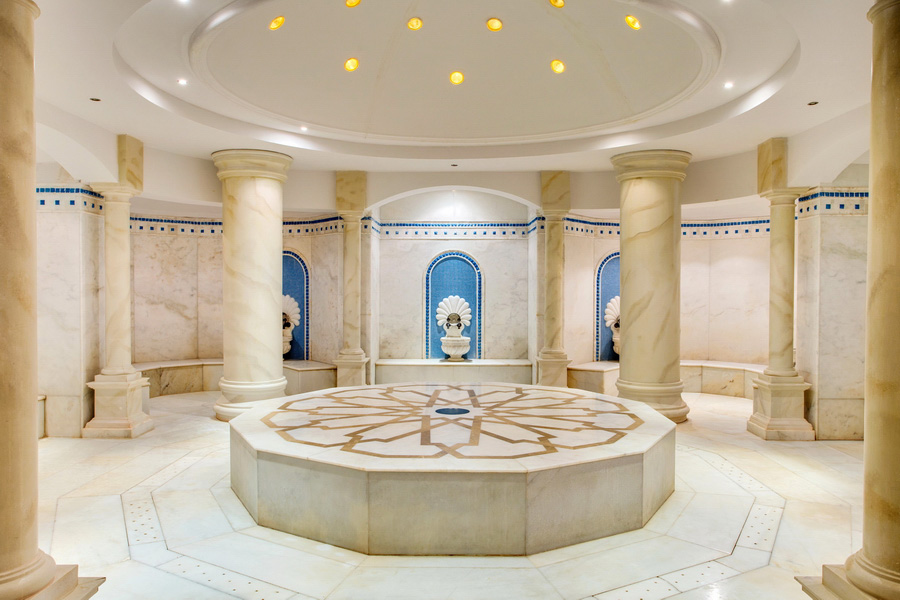
Turkey’s social customs, which are closely linked to the observance of Islam, such as attention to elders, warm greetings, and emphasis on brotherhood, are key aspects of daily interactions. From cologne to the historic bath culture, they continue to punctuate social life. Hospitality is at the heart of these customs, making visitors feel genuinely welcome in homes and public spaces.
Turkish Hospitality (misafirperverlik)
A surprise guest might be seen as an inconvenience in Europe or the US, but it is quite the opposite in Turkey. Renowned for its generous hospitality, Turkey embraces guests as blessings, mostly regarded as being “sent by God” (Tanrı Misafiri). Even unannounced visitors are welcomed warmly and offered the finest food, tea, coffee, and sweets. Declining such graciousness may offend the host, so it is best to relax and gratefully accept the warm generosity.
Bath Culture
Turks love visiting the bathhouse to cleanse the body and unwind. The tradition of the Turkish bath, or hammam (hamam), dates back centuries. Hammams were especially popular during the Ottoman era, leading to the construction of many baths whose stunning architecture still captivates admirers today. In Istanbul and elsewhere, several historic baths have been beautifully restored, such as the Zeyrek Cenili Hamam, where visitors can experience ancient traditions of thermal baths through luxurious rituals.
Hand Kissing (El Öpme)
Many foreigners are curious about the tradition of Turks kissing the right hands of elders and then touching their foreheads with them. This gesture reflects the profound respect Turkish culture places on elderly individuals. It is most notably observed during greetings. When meeting elderly relatives, it is customary to perform this act as a heartfelt sign of loyalty and esteem. This Turkish tradition came from the Ottoman culture, demonstrating love and reverence for seniors.
Cologne Culture
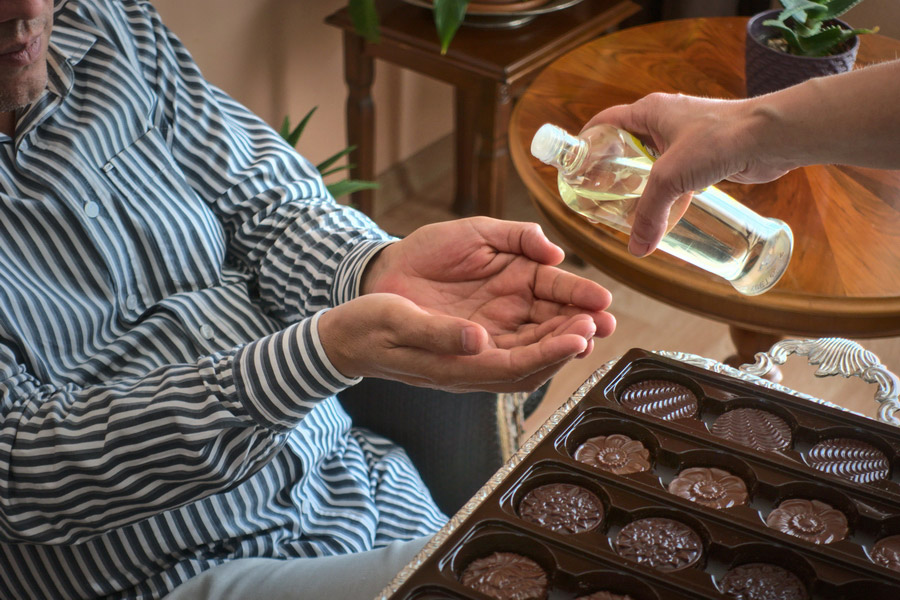
In Turkey, kolonya is more than a simple cologne—it's a centuries-old hospitality token. Offered to guests with a smile, it refreshes the hands, uplifts the spirit, and embodies Turkish warmth. High alcohol content and aroma compounds make kolonya both cleansing and refreshing. Travellers will find classic lemon or floral blends in shops and homes alike. Cologne can make a fragrant souvenir, capturing the essence of Turkish tradition in every drop.
Military Service
Military service (askerlik hizmeti) is strongly anchored in the Turkish tradition. Moreover, when someone is ready to be sent off, the young man’s family members and friends would arrange an event with meals and entertainment. Such gatherings have turned into ceremonies.
Different regions in Turkey have their unique way of blessing future soldiers. These rituals are meant to highlight the important part of their life and embolden them with the words of love.
Relatives and friends usually visit a young man for the next two weeks upon completing the military service and treat him like a special guest in his own home.
Wearing Red on New Year’s Eve
When celebrating New Year’s in Turkey, visitors will likely observe the prominence of the colour red in the attire and accessories of young men and women, particularly on New Year’s Eve. The tradition is rooted in a belief that wearing red can help attract a future bride or groom. Other fascinating customs include the symbolic smashing of pomegranates and the highly anticipated Mili Piyango, the annual national lottery grand prize.
Superstitious and Faith Customs
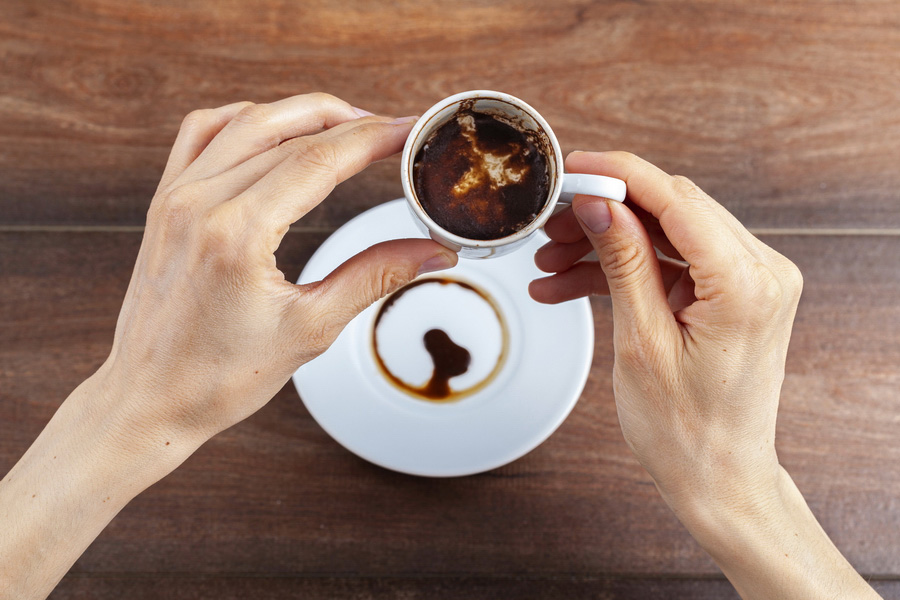
Superstitions and faith-based customs, from the protective blue evil eye to rituals of warding off bad luck, hold a special place in Turkish culture. Many Turks, regardless of modernity, still observe these customs as a way to attract good fortune and avoid trouble.
Fortune-Telling on Coffee Grounds
Few people realise that the Turkish coffee culture tradition was inscribed in UNESCO’s Representative List of Intangible Cultural Heritage in 2013. But why Turkish coffee and not Brazilian, Peruvian, or Colombian coffee? The answer lies in the brewing method and the role it plays in Turks' daily lives. Unlike European coffee's fast-paced habits, Turkish coffee is about savouring the moment and socialising with friends. One of the customs that boosts connections between people is fortune telling on coffee grounds, which Turkish women still uphold.
Evil Eye
People enjoy taking compliments, but too much praise can alert a Turk. One might even hear them exclaim, “Allah korusun!” — meaning “May God protect!” Why the sudden caution? The truth is that most Turks are superstitious and believe that excessive praise can harm them. Consequently, they place great importance on guarding against the evil eye. They say specific phrases and typically rely on a protective talisman, aka nazar boncuğu, to ward off bad luck. This iconic blue bead is everywhere—sold at every corner and incorporated into clothing designs and home decor.
Melting Lead Custom
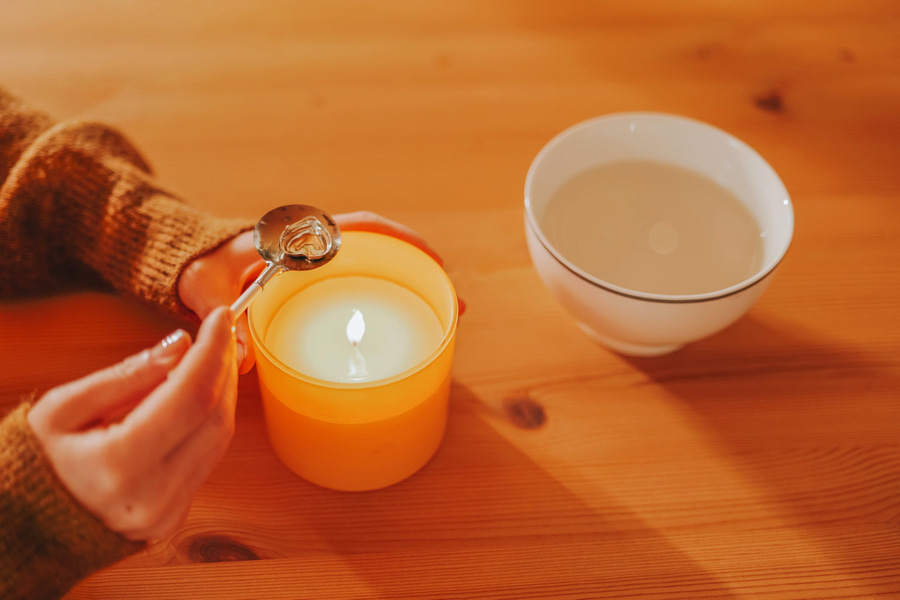
In Turkey, kurşun dökme (lead casting); in Finland uudenvuodentina; and in Germany, Austria, and Switzerland, bleigiessen is a ritual used to tell fortunes or protect against the evil eye. In these European countries, it is sometimes performed on New Year’s to predict the year ahead, while in Turkey it is likewise utilised to detect whether someone has fallen under the evil eye. The process involves melting lead and pouring it into cold water, forming strange shapes that fortune tellers then interpret. However, as lead poses health risks, this practice (known as molybdomancy) is declining in popularity and is often replaced with candle wax.
Turkish Wedding Customs
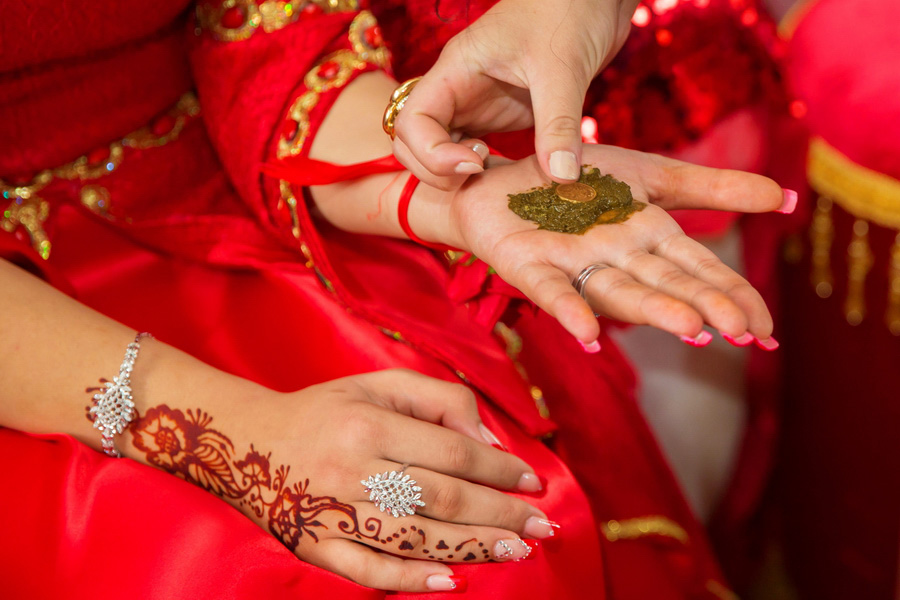
Turkish weddings are lively, family-centric celebrations. From the colourful henna night (kına gecesi) to animated festivities, each ritual symbolises unity, love, and good fortune. Guests and hosts alike come together to rejoice with the couple, forging bonds that last a lifetime.
Salt and Coffee—Kız Isteme
A wedding tradition that may feel like an ordeal rather than a charming ritual—the groom’s challenge of drinking not sweet but salty coffee. Yes, you heard that right. Even today some brides seize the opportunity to put their future husbands to the test when they come to formally visit their home. The test is simple yet revealing—if he manages to finish the briny brew without wincing or complaining, he is believed to possess the patience and composure of a good husband. After all, enduring such a challenge requires remarkable character. But beyond humour, the ritual carries a vivid symbolism: a subtle reminder that marriage is not solely about sweet moments but also the ability to navigate hardships together.
Henna Night Party
A few days before the wedding, the bride-to-be attends a Henna Night (kına gecesi), organised by her family and friends (a groom attends henna night only for a short time). This joyous occasion is marked by folk music, dance, and the henna application to the bride’s hands, symbolising blessings for abundance in her married life. As henna ceremonies are part of several Muslim countries and India, Turkey has become a sought-after destination for wedding tourism. Each year thousands of couples and their families from Lebanon, the UAE, Iran, Pakistan, and India flock to Turkey to tie their knots.
Jug Breaking—Kına Gecesinde
Another curious tradition performed on henna night is jug breaking. The clay vessel, filled with money, candies, and chocolates, is wrapped in red fabric. During the ceremony, the groom-to-be sits as the bride dances around him, shaking the pot in her hands. She hurls it to the ground unexpectedly, shattering the pot to pieces. According to tradition, this symbolic act is believed to bring lifelong happiness and wealth to the couple.
Turkish Artistic Traditions
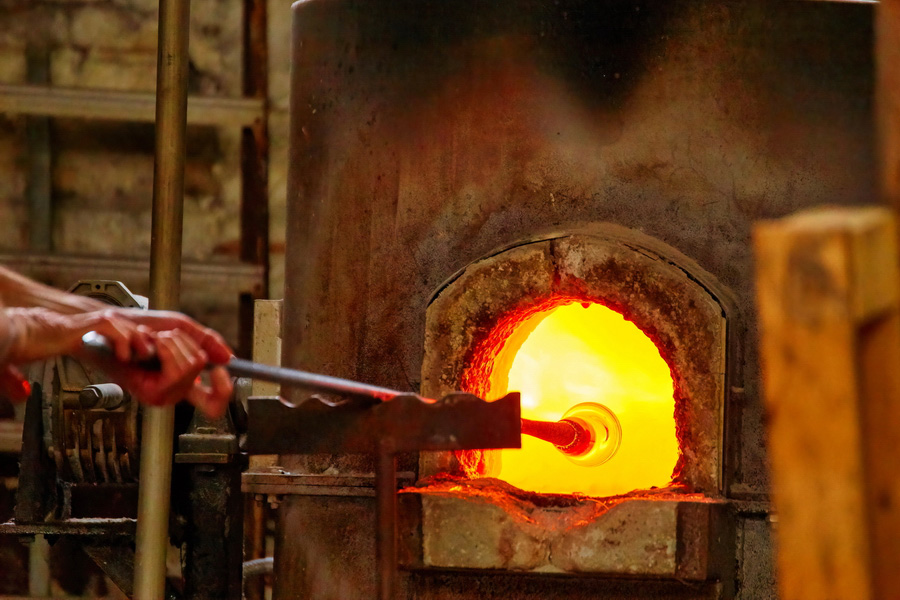
Turkey’s artistic heritage is a vibrant fusion of handicrafts, music, and dance. The refined techniques of glass-making demonstrate exceptional craftsmanship, transforming the molten materials into exquisite patterns. The powerful sounds of the davul and zurna further enrich festive gatherings, adding depth to the Turkish musical landscape. Together, these art forms showcase the nation’s creativity and community spirit.
Glass-Making
When observing the Suleymaniye Mosque, or Blue Mosque, one will notice glittering décor objects made from glass. Many of them were crafted by local masters who learnt this skill in Venice, giving rise to Ottoman glass art. Then, these techniques were passed through generations. Today, dozens of artisanal studios and workshops span many regions, especially Izmir and Denizli. Foreign visitors can witness and even participate in long-established methods like lampworking and sandblasting. Glasswork enthusiasts should visit the Museum of Modern Glass Art in Odunpazarı, Eskişehir, Turkey.
Halay Dance
One of Turkey's traditional dances is the incendiary Halay. No wedding, festival, corporate event, or anniversary is complete without it. Dancers join hands in a circle, performing rhythmic footwork that becomes a more mesmerising spectacle as the melody speeds up.
Davul and Zurna
On many occasions, zurna and davul are played side by side, creating an energetic duo that fuels Turkish folk dance tunes. The zurna is a double-reed woodwind instrument, and the davul is a percussion instrument. Both remain staples in folk music throughout the Middle East, the Balkans, and the Caucasus. Music enthusiasts can even enjoy their vibrant melodies through the Davul & Zurna app.
Turkish Clothing Traditions
Turkish clothing traditions are a testament to its history, identity, and artistry. Flowing kaftans, intricate embroidery, and regional attire tell stories of heritage and craftsmanship. Although modern fashion dominates everyday life, traditional garments still shine in ceremonies, celebrations, and cultural events.
Şalvar
White, black, and colourful baggy trousers are quite typical unisex pants in Turkey, especially in remote areas. The locals call them şalvar (shalvar).
The tradition of wearing these extremely comfortable pants will take one to the Ottoman Period. Despite the cultural revolution leading to a ban on şalvar in the early 20th century, these comfortable pants remain an important part of Turkish traditional clothing for rural Turks.
Women generally wear them with upper garments, mostly with colourful textiles around their waist, while men usually add a vest and jacket.
Turkish Food Traditions
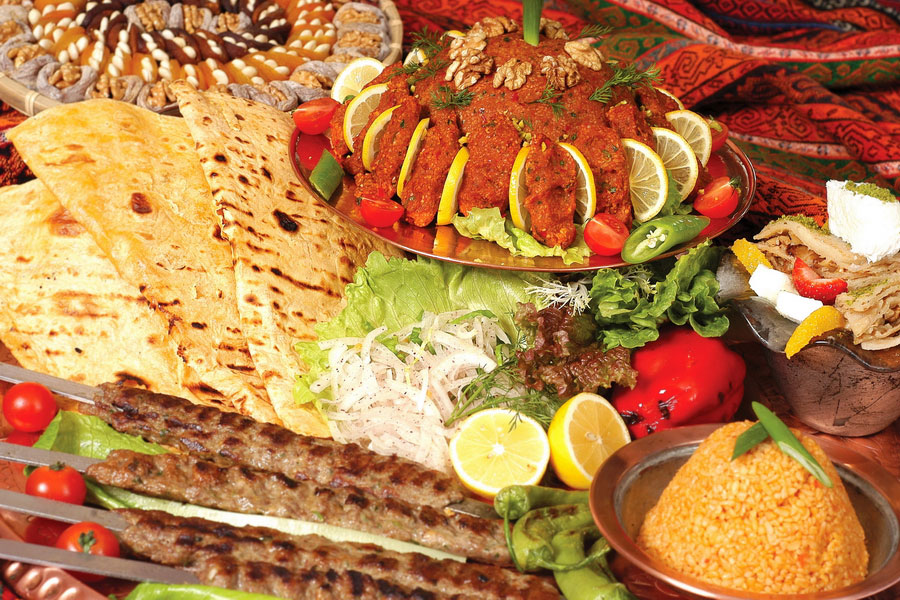
Turkish food traditions are a feast for the senses. Every dish carries a story, from breakfasts and slow-cooked stews shared at family gatherings to rich desserts served as symbols of goodwill. More than just food, Turkish cuisine celebrates culture, fellowship, and timeless culinary artistry.
Breakfast
Does any country worldwide have a concept of a “breakfast plate” (kahvaltı tabaği in Turkish)? This is another subject for investigation, but what is undeniable for sure is that Turkey does. Such a plate, a staple at almost every Turkish household, is filled with a variety of fresh vegetables, butter, jam, honey, Turkish sausage, olives, different cheeses, and a lot of other homemade breakfast deliciousness. Having breakfast in Turkey is a lovely way to spend a healthy morning.
Turkish Traditional Festivals and Celebrations
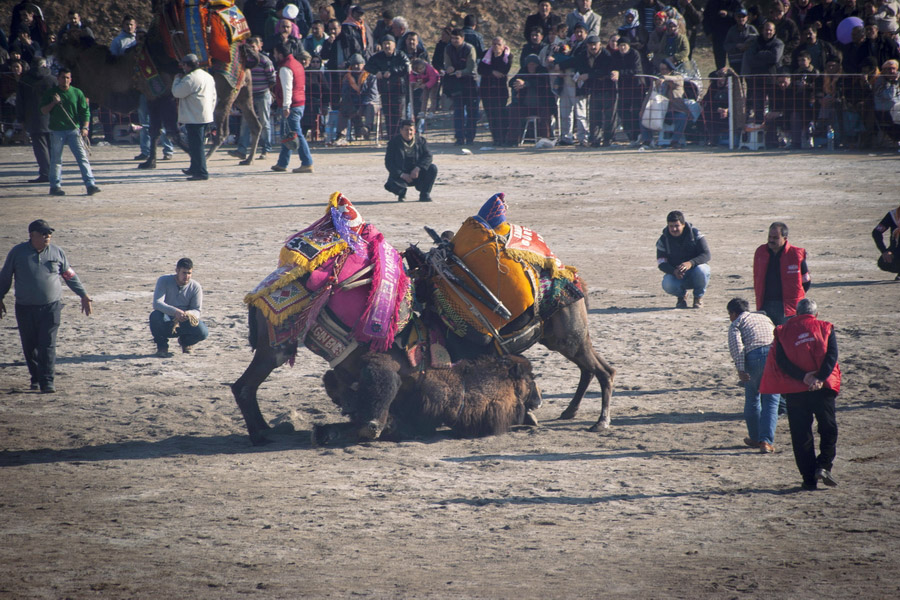
Turkish festivals and celebrations pulse with energy. These are ancient rites and national holidays; each event mingles music, dance, and beloved customs. These gatherings are more than mere festivities—they are living expressions of Turkey’s cultural soul.
Camel Wrestling
George Clooney and Brad Pitt are about to face off in an arena, but not the Hollywood stars one might expect. These are camels—often named after famous actors—participating in a long-standing Turkish sport, camel fighting (deve güreşi). For many tourists, attending one of these matches is an unforgettable experience. During the mating season of the camels, from December to March, hundreds of splendidly decorated male camels compete at the Camel Wrestling Festival, fighting for one female camel in heat, led before them, cheered on by boisterous whistles and shouts from the crowd. The most visited location is Selçuk, in Turkey’s western Izmir province, which will host the 43rd Camel Wrestling Festival in 2025.
Hıdırellez
The Turkish Spring Festival, known as Hıdırellez, centres around themes of good fortune, fertility, and prosperity. This UNESCO-recognised event is held annually on May 6th, featuring a variety of distinctive rituals and ceremonies, particularly in smaller towns and villages. For instance, on the night of Hıdırellez, it is a common tradition to leave wallets open to invite wealth. Those aspiring to own a house may craft a small model of their desired home and leave it overnight.
Turkish traditions and customs are formed by centuries-woven influences of ancient Anatolia, the Ottoman Empire, and modern-day Turkey. These deeply rooted attitudes uncover the nation’s strong sense of unity, hospitality, and reverence for history, faith, and family. Whether through venerable rituals like hand-kissing and Henna Nights, the social significance of Turkish coffee, or the festive spirit of Hıdırellez, each tradition provides a glimpse into the soul of Turkish culture.
Turkish society appreciates visitors who take the time to engage with its cultural treasures. From lively Halay dances and camel wrestling to the soothing embrace of a hammam, the traditions of Anatolian life continue to thrive while evolving with the modern world.


